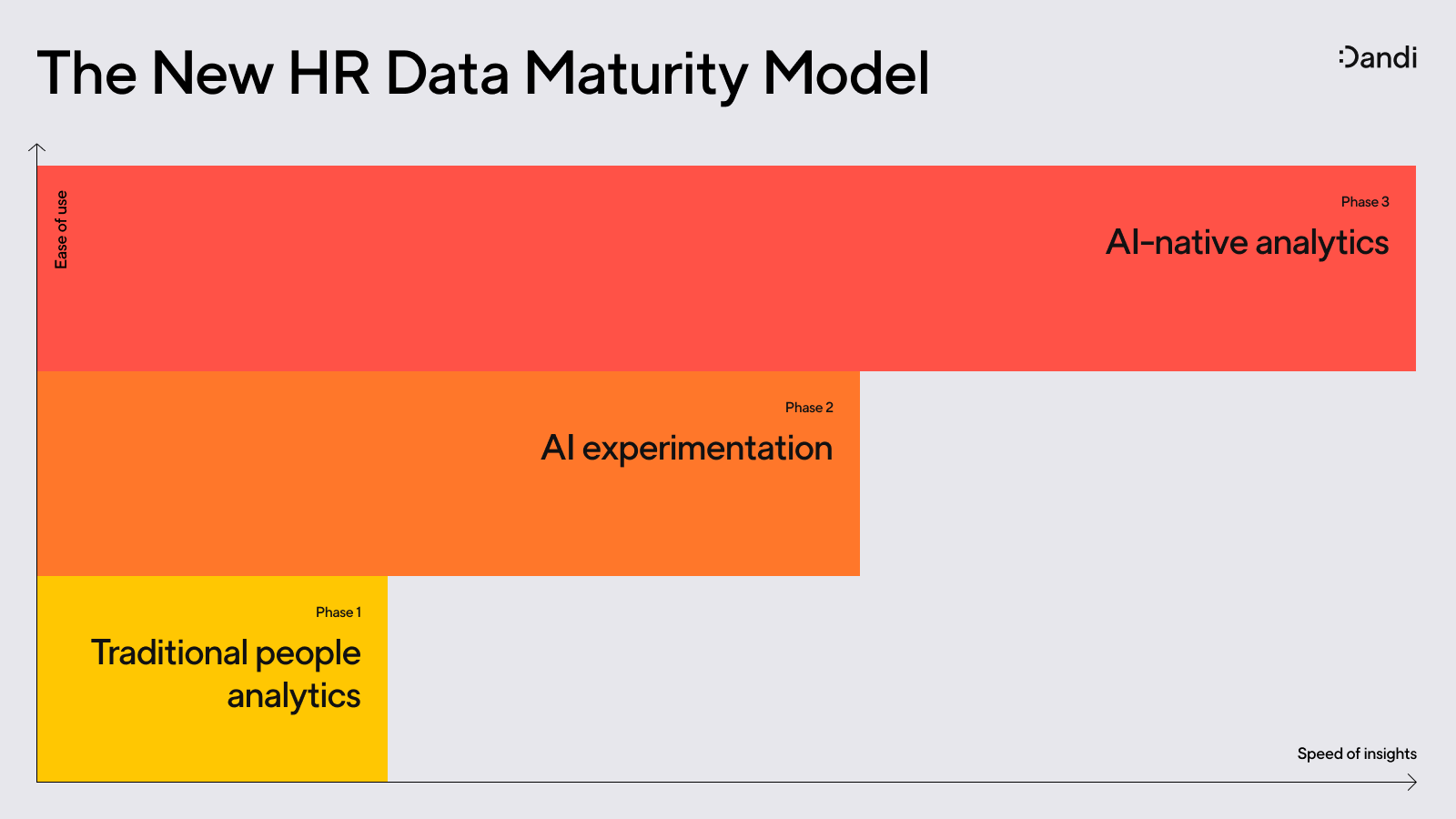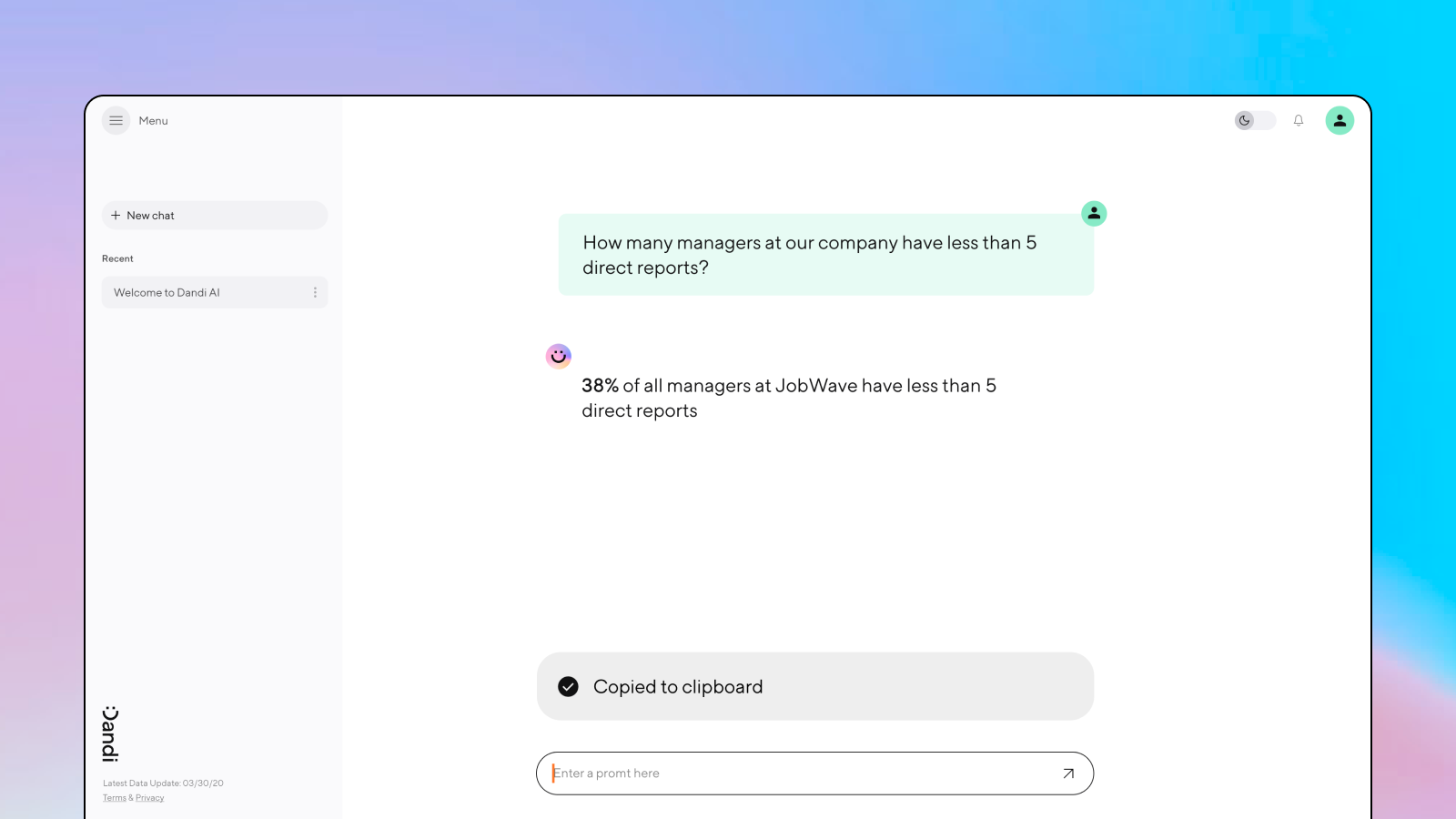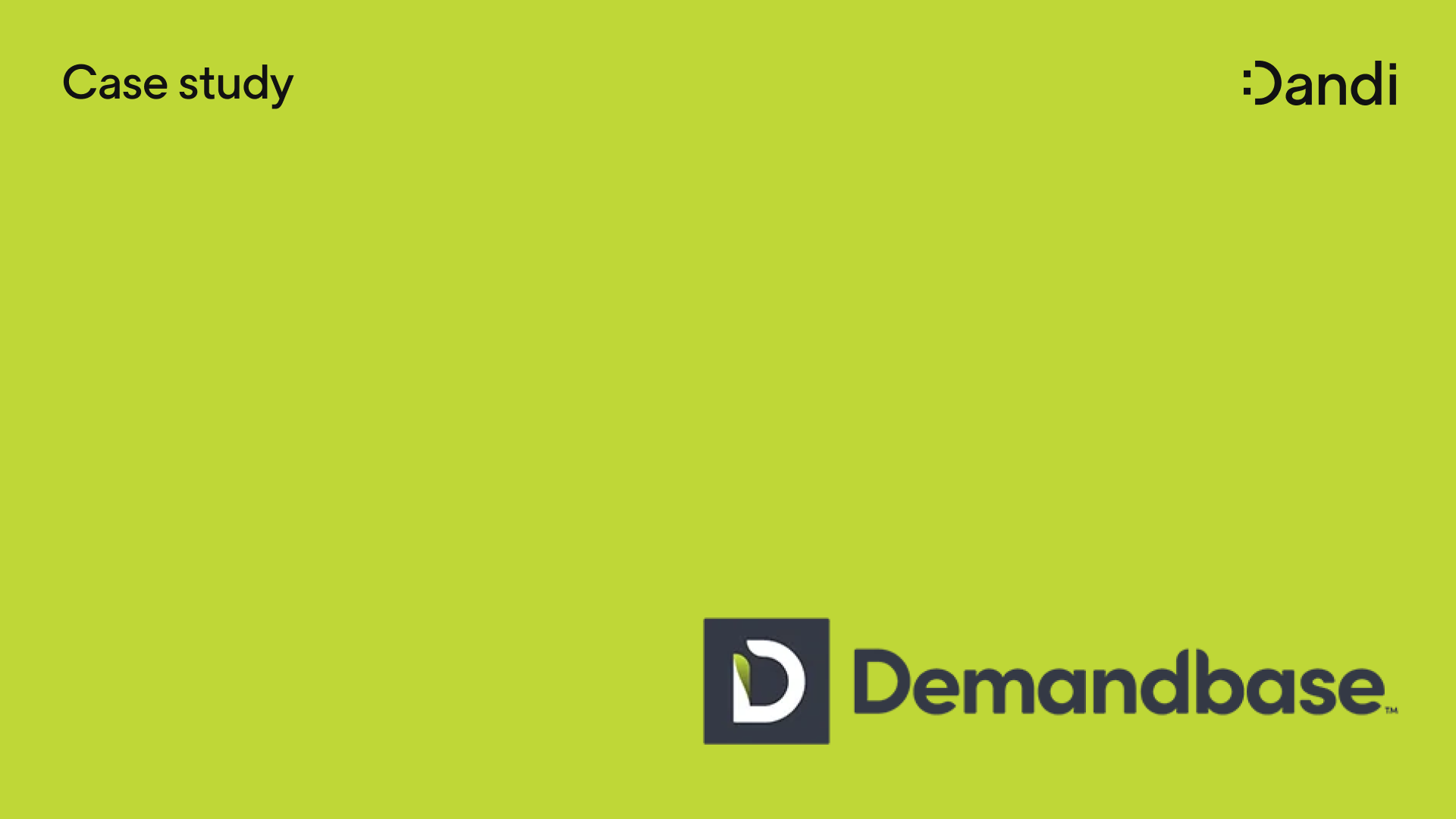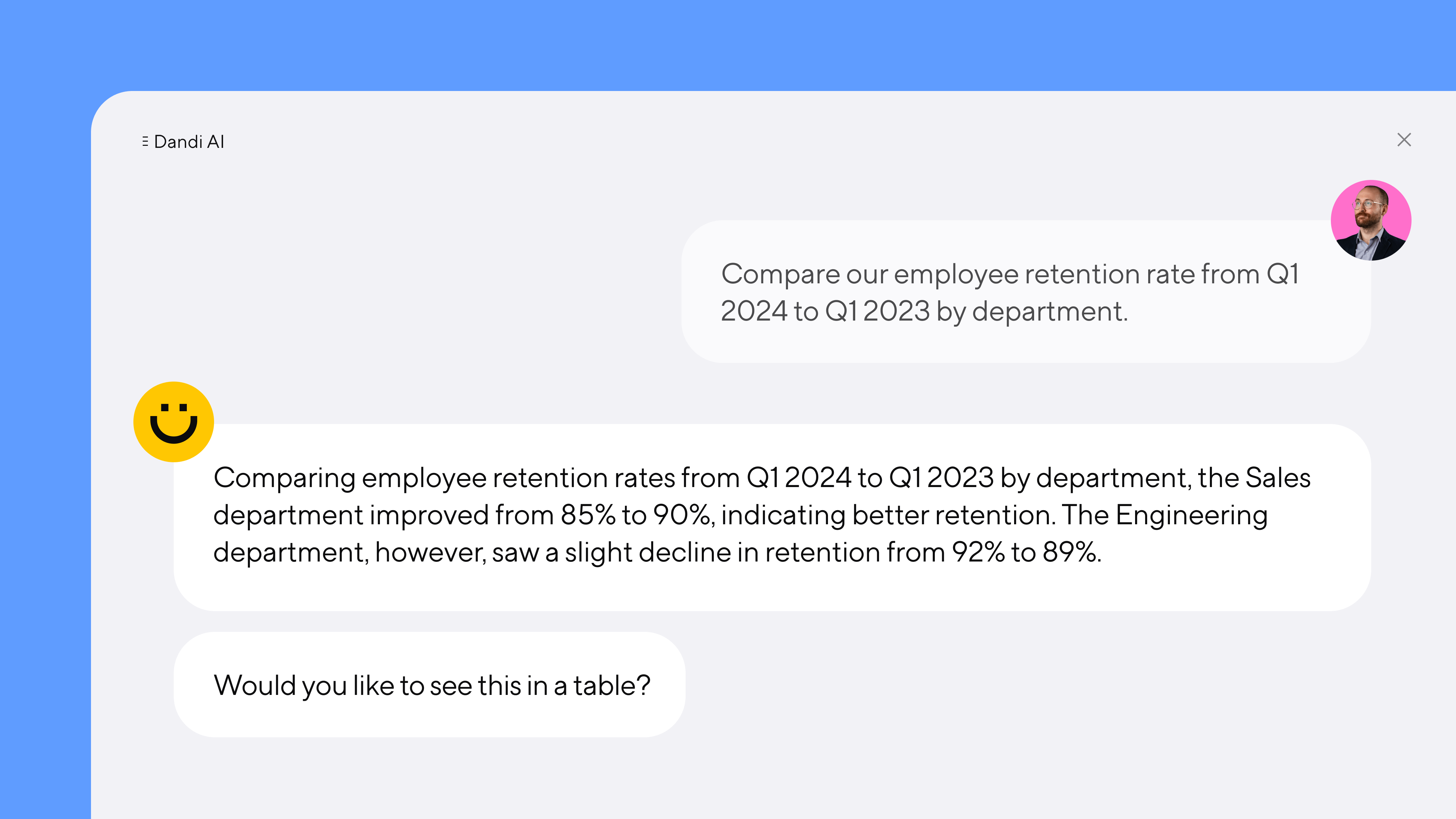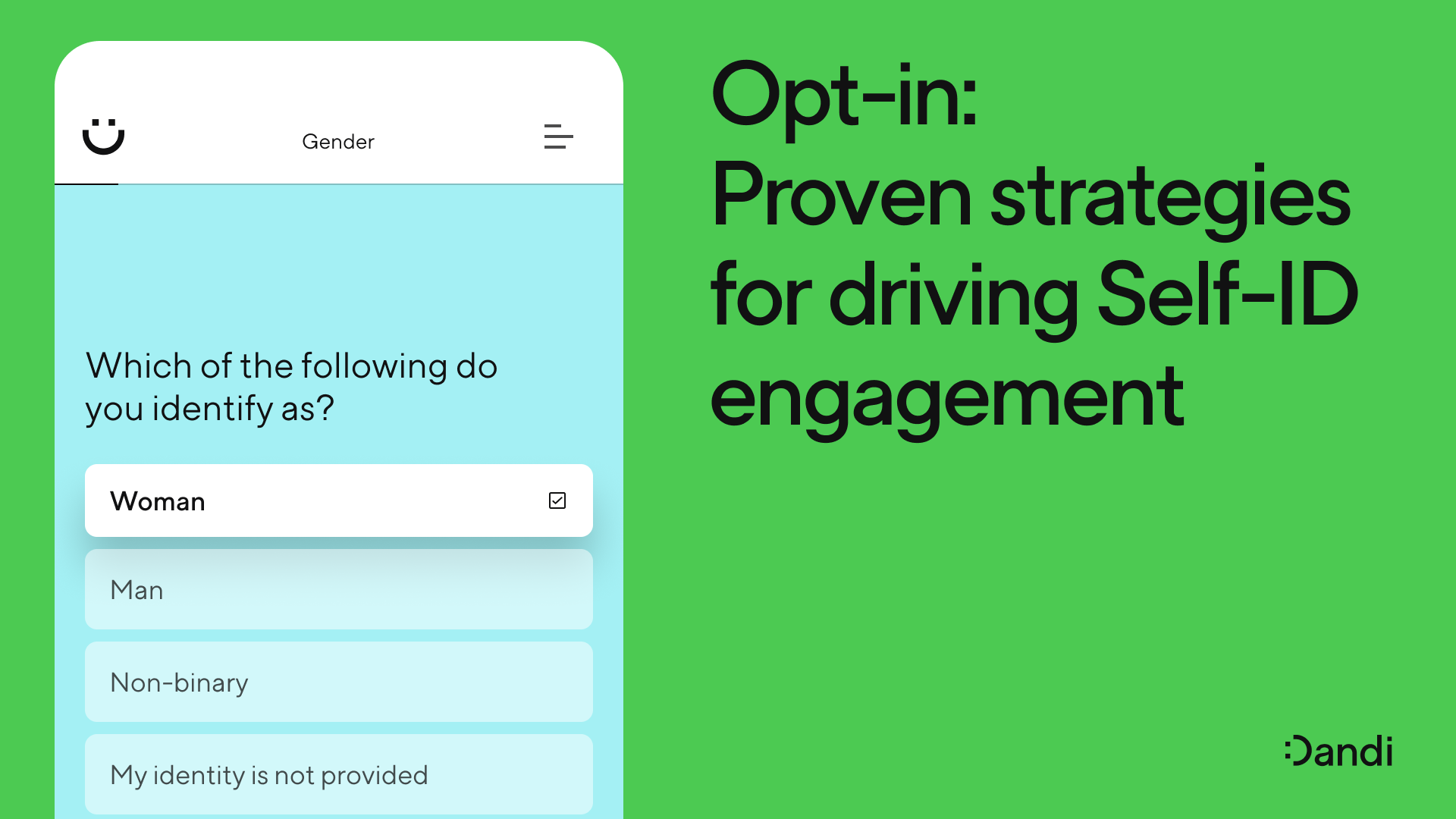HR acronyms decoded
Catherine Tansey – Mar 13th, 2024
Ever find yourself wondering what all those HR acronyms mean? Us too. This blog post has you covered with definitions for more than a dozen common HR acronyms.

In the HR software and people analytics space, it seems new HR acronyms are always being folded into the lexicon. Being armed with a better grasp of HR acronyms can ultimately inform more strategic use of your people analytics platform, driving better HR strategies and organizational effectiveness.
Read on for the Dandi glossary of 13 common HR acronyms.
1. ATS (Applicant Tracking System)
What is an ATS?
An applicant tracking system is software used by People teams to manage the recruiting and hiring process.
What does an ATS do?
Designed to streamline recruiting end-to-end, ATS enables companies to post job openings, collect resumes and applications, and manage the hiring workflow more efficiently. ATS include features that help recruiters manage large volumes of applicants and identify the most qualified candidates for open positions, like resume parsing, keyword search, candidate communication tools, and reporting capabilities.
2. ED (Employee Development)
What is ED?
Employee development refers to the process of investing in employees by enhancing their skills, knowledge, and abilities to support the overall growth of employees and the organization. It encompasses the various initiatives aimed at improving the employee performance, productivity, as well as the satisfaction of employees.
What purpose does ED serve?
Employee development supports the org in preparing employees for future and current roles within the company. Employee development initiatives can include formal training programs, workshops, seminars, mentorship programs, coaching sessions, job rotations, stretch assignments, and educational opportunities.
Who owns it?
At some companies, ED is headed up by a specific learning and development (L&D) function, while at others it sits squarely under HR.
3. EE (Employee Engagement)
What is EE?
Employee engagement refers to the extent to which employees are emotionally invested in their work, committed to their organization's goals, and motivated to contribute to its success. Engaged employees are typically dedicated, enthusiastic, and passionate about their work, leading to higher levels of productivity, performance, and job satisfaction.
What impacts EE?
Employee engagement is affected by direct employee engagement initiates but also general organizational policies, like family leave, flexible work, L&D, and more.
Who’s responsible for EE?
HR owns organization-wide employee engagement but managers play a crucial role in determining level of engagement among staff.
4. ERP (Enterprise Resource Planning)
What is ERP?
ERP refers to a type of software system that integrates various business processes and functions across an organization into a centralized platform.
Why have ERP software?
ERP systems are designed to streamline and automate core business activities such as accounting, human resources, supply chain management, customer relationship management, and more.
Who oversees an ERP system?
ERPs touch many departments and are the purview of multiple stakeholders, like IT, HR, finance, operations, and more.
5. EX (Employee Experience)
What is EX?
The employee experience encompasses all interactions an employee has with an organization throughout their entire employee journey. Beginning with recruitment and onboarding and spanning professional development, promotions, and eventually offboarding, the employee experience is how an employee perceives and engages with the company.
Why focus on the employee experience?
The employee experience is related to employee engagement but remains distinct. HR is typically charged with the various initiatives that directly influence EX but ultimately, the entire organization, culture, and the people who compose it affect the employee experience.
6. HCM (Human Capital Management)
What is HCM?
HCM is the collective set of practices, strategies, and technologies companies leverage to manage and optimize the value of the workforce.
What’s the purpose of HCM?
HCM encompasses the various functions related to human resources, like sourcing and acquisition, talent management, employee development, and succession planning, and focuses on maximizing the value and potential of employees to achieve organizational goals. HCM is considered a more contemporary approach to managing the workforce than HRM.
7. HRIS (Human Resource Information System)
What is an HRIS?
HRIS is a solution or platform that integrates the various HR functions and processes into a single, centralized database. HRISs typically include functionality that touch recruitment and onboarding, talent management, L&D, employee engagement, compensation and benefits, and HR analytics and reporting.
Why have an HRIS?
HRIS allows orgs to streamline and automate their various HR-related worfklows.
8. HRM (Human Resource Management)
What is HRM?
Organizations use HRM to manage the workforce to maximize its effectiveness in achieving organizational goals.
How does HRM differ from HCM?
HRM focuses on identifying and implementing procedures and business strategies to achieve desired outcomes, whereas HCM aims to leverage human capital to achieve business outcomes. Human capital management is often considered the evolution of HRM.
9. KPI (Key Performance Indicator)
What are KPIs, and why set them?
KPIs are quantifiable metrics companies use to evaluate success or performance. KPIs can be used at the organizational, departmental, project, or individual levels.
KPIs are set and owned by everyone from the board to directors to the c-suite, to managers and direct reports and are determined based on their relevance to the org’s strategic priorities.
10. LMS (Learning Management System)
What is an LMS?
An LMS is a platform or software that companies use to manage all facets of employee learning, from delivery to tracking and reporting. LMS systems are often used by organizations to facilitate training and/or professional development. HR or L&D oversee a company’s LMS, with support from IT.
11. OD (Organizational Development)
What is OD?
Organizational development focuses on improving an organization's effectiveness and performance through interventions targeting its organizational structures, processes, culture, and people.
What’s the purpose of OD?
The goal of organizational development is to foster positive change and growth within an organization to help it adapt to external pressures, achieve its goals, and sustain long-term success.
Who oversees it?
Senior leadership and people teams are primarily responsible with the OD strategy but managers and employees are essential participants in supporting change.
12. OKR (Objectives and Key Results)
What is the OKR framework?
OKRs are a goal-setting framework used by organizations to define and track objectives and their measurable outcomes. Each strategic priority is divided into the objective and the key results, with the objective answering the question: where do we want to go? The key results answer: how will we know when we get there?
Why do some companies use OKRs over SMART goals?
The OKR framework has replaced traditional goals or SMART goals at many organizations for its focus on outcomes, flexibility, transparency, and alignment. OKRs are set at the organizational, departmental, project, or individual levels and pull in various stakeholders.
13. WFM (Workforce Management)
What is WFM?
WFM, or workforce management, is the set of processes and tools organizations use to optimize their workforce for greater productivity, efficiency, and performance.
WFM spans various activities related to workforce planning, scheduling, time and attendance, tracking, and succession planning to ensure that the company has the people and skills required to meet the needs of the business.
Dandi simplifies people analytics for HR & DEI teams at some of the world's most innovative companies. Learn more about our simple, powerful, beautifully designed platform.
More from the blog
Announcing more powerful Dandi data visualizations
Team Dandi - Oct 23rd, 2024
The New Maturity Model for HR Data
Catherine Tansey - Sep 5th, 2024
Buyer’s Guide: AI for HR Data
Catherine Tansey - Jul 24th, 2024
Powerful people insights, 3X faster
Team Dandi - Jun 18th, 2024
Dandi Insights: In-Person vs. Remote
Catherine Tansey - Jun 10th, 2024
Introducing Dandi AI for HR Data
Team Dandi - May 22nd, 2024
5 essential talent and development dashboards
Catherine Tansey - May 1st, 2024
The people data compliance checklist
Catherine Tansey - Apr 17th, 2024
5 essential EX dashboards
Catherine Tansey - Apr 10th, 2024
Proven strategies for boosting engagement in self-ID campaigns
Catherine Tansey - Mar 27th, 2024

